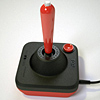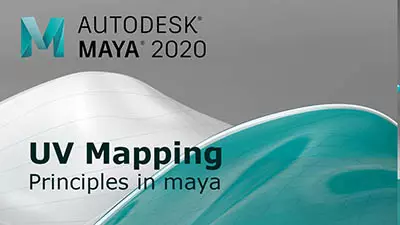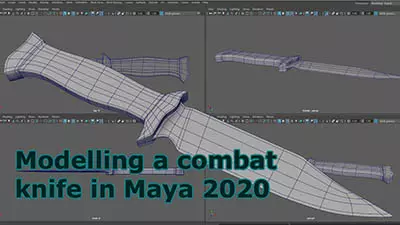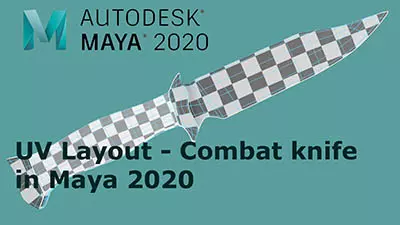Introduction to Maya - Rendering in Arnold
This course will look at the fundamentals of rendering in Arnold. We'll go through the different light types available, cameras, shaders, Arnold's render settings and finally how to split an image into render passes (AOV's), before we then reassemble it i
#
16
06-12-2006
, 08:30 PM
Registered User
Join Date: Sep 2006
Join Date: Sep 2006
Location: NY
Posts: 208
And, 4 hours isn't bad at all. I'll have to keep Maxwell in mind when I'm rendering a sole object in a scene. But, DjbLAZER, I have a question for you, since you brang up that point.
Let's say I wanted to render an object in no type of environment. Can I alter the background color in any way, or should it be black?
As I typed that, I realized something that I thought I'd share. If Maxwell can give you such beautiful results, why not render the shot you want, and add the background, reflections, and highlights in post?..........I think I just gave myself, and hopefully anyone reading this, a great reason to give Maxwell and/or Indigo a try!:attn:
Eric Tacti
3D Artist
#
17
06-12-2006
, 09:13 PM
I don't quite understand what you mean about "background, reflections, and highlights in post"?
how would you create those highlights, reflections etc?
The thing about why a render looks so realistic in Maxwell is because ALL of those things (reflection, refraction, specularity etc. etc.) contribute to making the scene realistic. If you add things by yourself by either painting them or render in another program you will surely break the image.
#
18
06-12-2006
, 11:20 PM
Registered User
Join Date: Sep 2006
Join Date: Sep 2006
Location: NY
Posts: 208
For instance, let's say I rendered this watch. I could bring it into Shake and composite it into a pic I had that could pose as some sort of display for the watch. Then, I could do a slight highlight on the glass face of the watch, and throw in a few reflections of some sort of the surrounding scene.
I don't think this would 'break' the image. It may not be quite as realisticly lit or detailed, or as lifelike as a complete Maxwell/Indigo render, but at 4 hours vs. 60 hours, I think I'd try as best as I could to add the effects myself. Just a thought, though.
Oh, and thanks for the info about the background look. I think adding a nice hdri would be cool in some cases.
Eric Tacti
3D Artist
#
19
07-12-2006
, 01:35 AM
You'll need a LOT of photons, and it will render for tens of hours.
#
20
07-12-2006
, 02:18 AM
Photorealism doesn't just come from the render engine, it's a combination of everything.
First there's the actual model. To look real, the model has to be exact, with every little detail modeled, and every edge modeled with the correct fillet. Without this attention to detail, no matter how you render the scene it won't look real.
Next there's the texturing. This model had multiple bitmaps on everything from the anistropic to the bump, all to get the brushed metal look right.
Thirdly, there's the lighting set-up. You can't just throw a few lights in the scene and hit the render button, and expect it to look real. In fact, what is physically correct with light placement often doesn't look real in a render, so you have to "cheat" with CG lighting rigs to get the correct result. This topic alone is a huge learning curve, and one which I'm still trying to master (I've been studying Photography books to learn about real-world lighting, and for this image I did research on photographing watches for marketing).
Then finally there's the render engine set-up. This is where Maxwell helps out, as you don't have to mess with photons, final gather rays, caustics, etc., as all these things are automatically taken into account. The only thing you have to do with Maxwell is set up your camera like a real camera, with the correct shutter speed, f-stop, ISO, etc.. However, once again this requires study of how an actual camera works.
Put all these things together, and you start to get better looking images.
Djblazer, this scene does have walls surrounding the watch, they're just set to a black color. I did this specifically so that the reflecting floor would reflect the black of the walls, and not the white of the lighting (learned this from studying how watches are photographed in real life). Once again, this took time to get right with the camera angle, and adjusting the lighting. Also, I learned that it is considered an "ugly" watch photograph to have the lights reflecting off the glass, as manufacturers want the consumer to see the details of the face, and not a white reflection obscuring the details. Once again, this is tricky to do, and in real life photographers use black discs on the lights positioned exactly to have the glass of the watch reflecting the black disc, not the white light. Bottom line, there's a lot that goes into making a real image.
Last edited by dilberts; 07-12-2006 at 03:29 AM.
#
21
07-12-2006
, 08:56 AM
For the black disks on the lights, dunno how maxwell works with lights i.e if they arederived from the actual maya lights but couldent you map some of the disks to the colour map of the lights to get the correct look? Sure that you've thought of this though.
Just a thought
Cheers
"No pressure, no diamonds" Thomas Carlyle
#
22
07-12-2006
, 12:42 PM
Registered User
Join Date: Sep 2006
Join Date: Sep 2006
Location: NY
Posts: 208
Again, great work!
Eric Tacti
3D Artist
#
23
07-12-2006
, 09:54 PM
#
24
08-12-2006
, 12:38 PM
the face looks nice - it looks like it has depth to it
makes it look muck more realistic to me
Now at SMU doing BSc 3D Computer Animation so its hard to get on here
My wire render tut https://forum.simplymaya.com/showthre...threadid=20973
#
25
10-12-2006
, 03:46 AM
Registered User
Join Date: Sep 2006
Join Date: Sep 2006
Location: NY
Posts: 208
Eric Tacti
3D Artist
Posting Rules Forum Rules
Similar Threads
Let rendered camera control light?
by Bornhall in forum Lighting & Rendering replies 8 on 24-02-2012
maxwell render tuts for maya
by banksta in forum Maya Basics & Newbie Lounge replies 1 on 31-10-2008
Maxwell render
by tsoini3 in forum Lighting & Rendering replies 3 on 08-10-2008
Maxwell Vs. Mental ray
by Joopson in forum Maya Basics & Newbie Lounge replies 32 on 27-07-2008
maxwell for maya linux 64
by antonyant11 in forum Maya Basics & Newbie Lounge replies 2 on 24-03-2008
Topics
Free Courses
Full Courses
VFX News
How computer animation was used 30 years ago to make a Roger Rabbit short
On 2022-07-18 14:30:13
Sneak peek at Houdini 19.5
On 2022-07-18 14:17:59
VFX Breakdown The Man Who Fell To Earth
On 2022-07-15 13:14:36
Resident Evil - Teaser Trailer
On 2022-05-13 13:52:25
New cloud modeling nodes for Bifrost
On 2022-05-02 20:24:13
MPC Showreel 2022
On 2022-04-13 16:02:13











